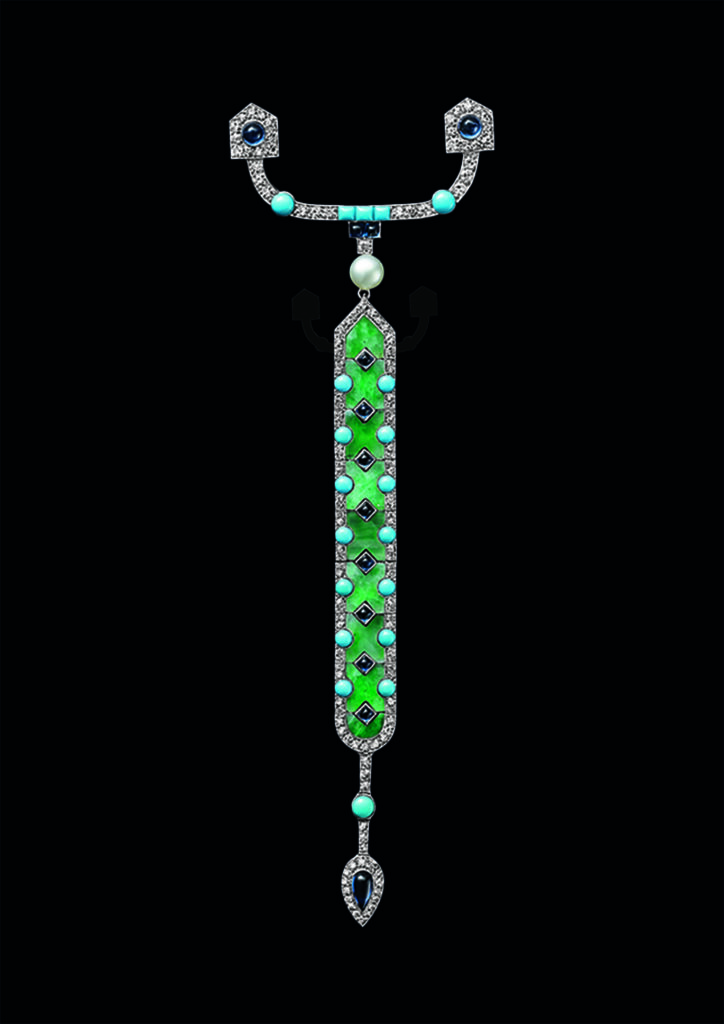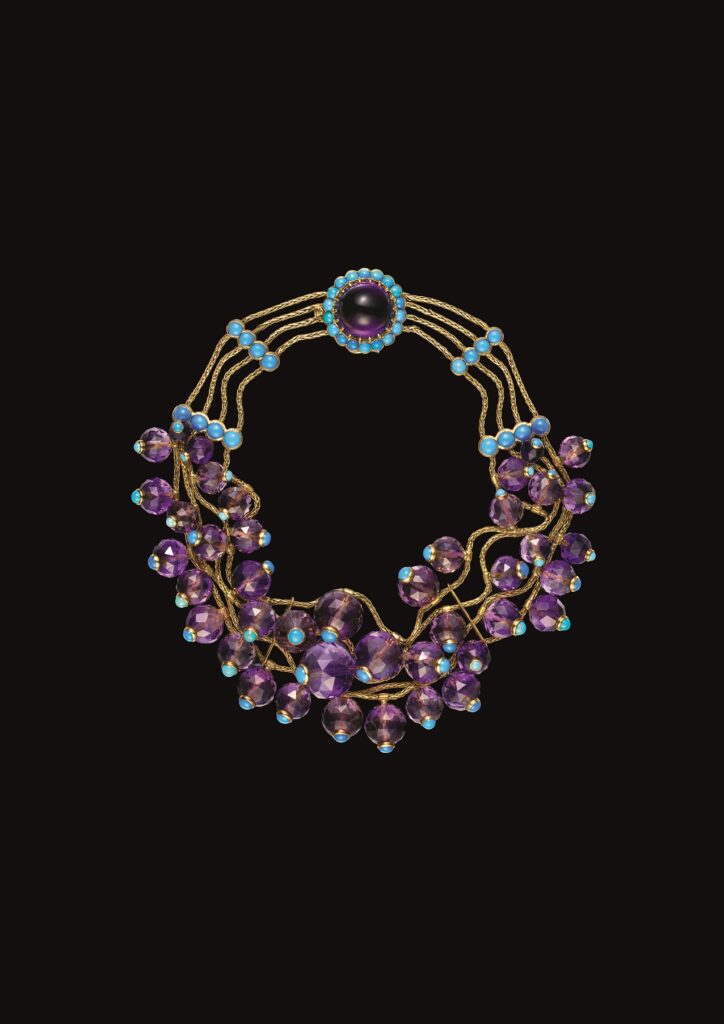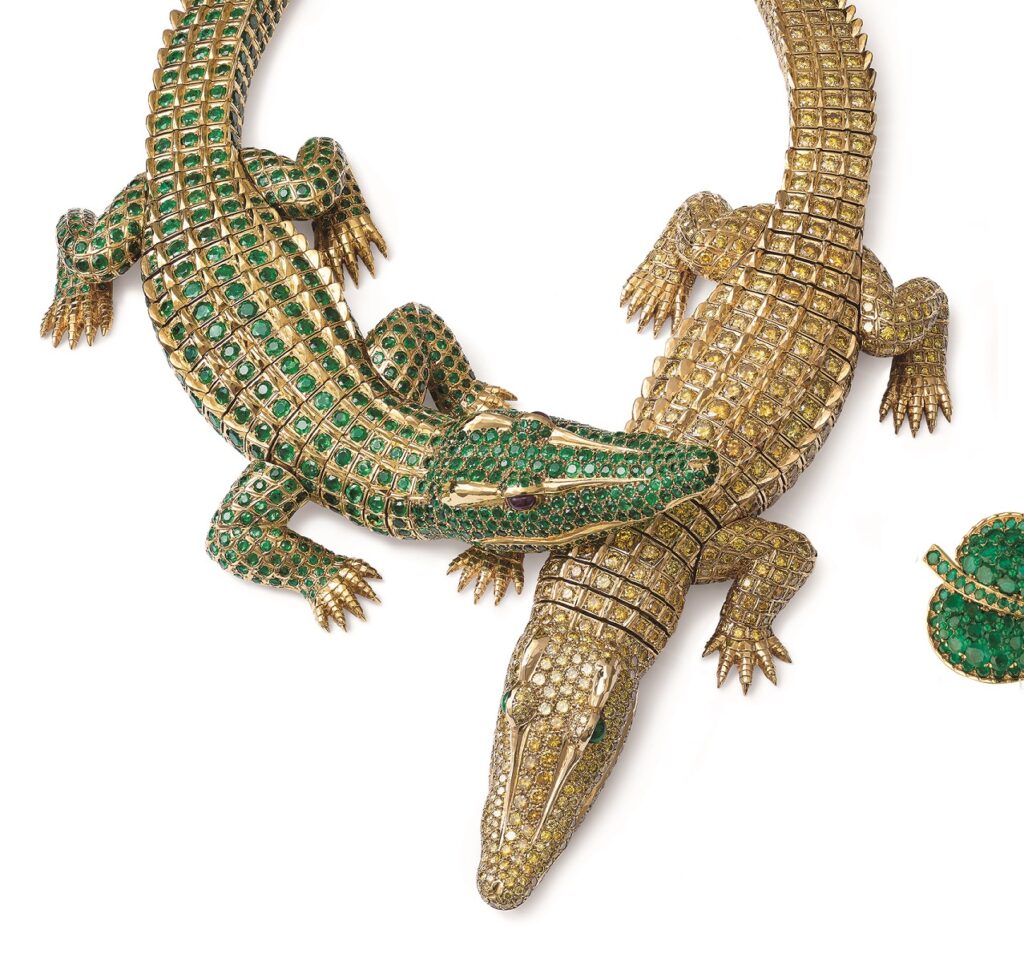The creative past and future of Cartier are explored in the newly released Rizzoli book, Cartier Design: A Living Legacy. The 288-page tome chronicles Mexico City’s Museo Jumex collaboration with Cartier that brought some 180 pieces of jewelry from the Maison to the museum in an exhibition that showcased the creative force and technical skill of the jewelers 175 year history.
Written by Ana Elena Mallet, a Mexican curator and author, Cartier Design focuses on how the Maison developed its design vocabulary that was influenced by not only the creative directors and artisans who made the jewelry, but also the clients who wore the creations.

A Design Journey
The book is divided into five sections: The Early Days and the Birth of a Style, Universal Curiosity, Jeanne Toussiant’s Taste, Wearing Beauty and Measuring Time. The fifth section penned by Michel Aliaga, Director of Transmission of Cartier History and Heritage, highlights Mexican actor Maria Felix, who was one of Cartier’s biggest fans.
The book has two forewords, the first is by Eugenio Lopez Alonso, president, Fundacion Jumex Arte Contemporaneo, who notes that: “From my perspective the jewelry is all the more valuable for the stories it conjures. Each piece recalls its conception or inspiration, as well as the stones or minerals used to make it. At the same time, a jewel tells of who it belonged to, how it came into its owner’s hands and how it entered the Cartier Collection. In this way, the Cartier Collection pieces are both forms of personal expression and testaments to the culture of the past two centuries.”
The second foreword by Cyrille Vigneron, president and CEO, Cartier SA, opens his comments by stating that Cartier has a diverse yet recognizable style. He goes on to observe that it is exactly this recognizable style that links the jewelry though time and fashion. And because of this singular style, Vigneron says the Cartier archives are not a testament to the past, but instead are a source of inspiration for future creations.

Developing a Singular Style
In the prologue, director of image, style and heritage, Cartier, Pierre Rainero examines how Cartier created its signature style. He discusses how Louis Cartier was instrumental in setting the design direction for the firm, creating a unique and distinguishable style for the Maison. Louis Cartier drew upon a sense of proportion, harmonious balance of form, line and volume. Rainero traces the firm’s design evolution from the Garland style of the early twentieth century to the pure essence of shape and codes from other cultures that has brought a unique aesthetic to Cartier that continues today.
The introduction, Notes About a Museography Design: A Project by Frida Escobedo, looks at how the Mexican architect was inspired by German artists Josef and Anni Albers in her design for the exhibition. Escobedo’s intent was to “situate the Cartier Collection with the Mexican territory, offering visitors a unique experience by way of a path combined with Mexican materiality, landscape and aesthetics.”

A Pictorial Overview
The next four chapters take us on a journey through the years of design at Cartier. It’s a splendid pictorial tour of the Maison’s jewelry, watches, clocks and vanity cases, which includes the influence of the Cartier creative director and tastemaker, Jeanne Toussaint. However, it is the fifth chapter, Maria Felix and Icons of Elegance, that is perhaps the most fascinating part of this book. The Mexican actress was a very important and high profile client who loved Cartier’s jewelry. She liked to wear large pieces often in multiples and she commissioned a number of jewels from Cartier that have become iconic for the Maison.

Maria Felix and Her Cartier Jewels
Maria Felix made her movie debut in the 1940s and became Mexico’s most renowned star of the silver screen. She was stylish, elegant and unconventional, often smoking a cigar. Married to French businessperson Alexandre Berger, the couple split their time living between Paris and Mexico City. Maria loved large, voluptuous jewelry and Cartier was the masterful maker of those pieces.
While Maria owned the firm’s panther jewelry and a series of coral pieces, her best known Cartier jewels are her snake and crocodile necklaces. The sinewy snake necklace was a challenge to create and the artisans in the workshop spent many hours making the snake work technically. After the success of her snake necklace, Maria challenged the creativity and skills of the artisans at Cartier once again when she commissioned her crocodile necklace. The book’s narrative, tells the tale of Maria walking into the Cartier boutique with a live baby crocodile to show the artisans so they could make her jewel as lifelike as possible. The end result was so successful that Maria personally visited the workshop to thank the artisans who worked on the piece. Eventually, Cartier acquired the necklace as part of its collection.
Cartier Design: A Living Legacy looks at the Maison’s past as an inspiration to a new generation of designers as it is their creative spirit that will continue to develop and reinvent the legacy of the storied design house.

Featured image (top of page): Lily stomacher brooch, Cartier Paris, Special Order, 1906, platinum and diamonds, photo by Nils Hermann, Collection Cartier, © Cartier
Authored by Amber Michelle
